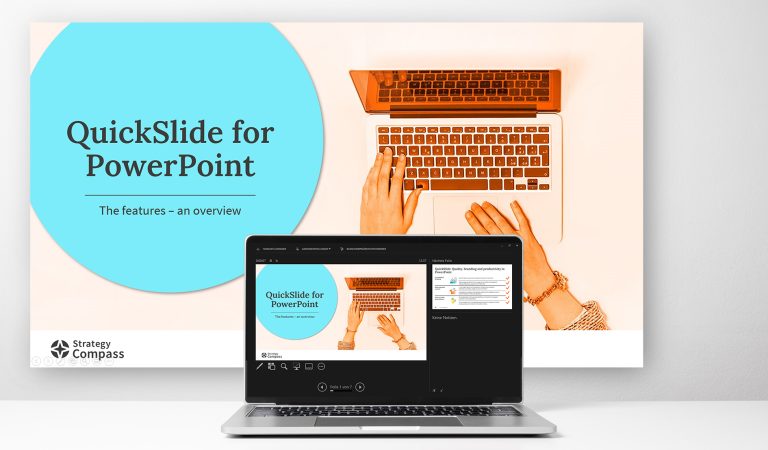Orientation: Presenter View in PowerPoint
Keep an overview as speaker
We cover the subject of orientation in several of our blog posts. Why? Because orientation is really important! Here, we focus on your security and orientation as the person standing up front and speaking. The more authoritative, confident and relaxed you appear while presenting, the more credible and interesting you’ll come across as to your audience.
Er … where was I?
It’s easy to lose your thread. Perhaps you got carried away or were interrupted by a question or a short discussion. Then you lost track of time. Suddenly, out of the corner of your eye, you see someone indicating that it’s time to wind up. And you haven’t even reached your key message. Or maybe you were a bit nervous and forgot what you wanted to say at one key point in your presentation, so digressed. This can happen, even to the best speakers.
The speaker’s trick

- The slide currently being shown
- A preview of the next slide
- Your notes and keywords to prompt you, next to the slide being shown
- The elapsed time since you began
Speaker orientation in PowerPoint has never been easier
- Extending the display: To use Presenter View, make sure your computer is correctly set up for multiple displays. Right-click on the desktop and choose Screen Resolution/Display Settings. Then, under “Multiple displays” choose the option “Extend these displays.” If you just duplicate the display, Presenter View won’t work, as you’ll then only have one screen.
- Activate Presenter View: In the PowerPoint Slide Show tab, check the option Use Presenter View. All done. If you like, you can click the Set Up Slide Show button to make further adjustments.
- Start the Slide Show. If the monitors have been swapped, you can change this using the menu above the checkbox Use Presenter View.
Now you, the speaker, can see everything you need on your laptop screen, and the audience sees only the current slide via the beamer. You can relax. The part of your brain that’s always been preoccupied with these things is now free to focus on your presentation and the interaction with your audience.
Note: Presenter View is an option for virtual presentations as well. Just be careful here. Don’t share your whole screen, or an uploaded version of the presentation file, or everyone in the video call will see everything you see. Choose the specific window displaying your presentation from the options given when you click the “share screen” icon. This will let you see your notes, and use the pen, laser pointer, etc. as before, while your audience only sees the main presentation on their screens.
The security you gain from using Presenter View puts you at ease and boosts your confidence while presenting. You can concentrate much better on your material and key messages – and keep an eye on the time.